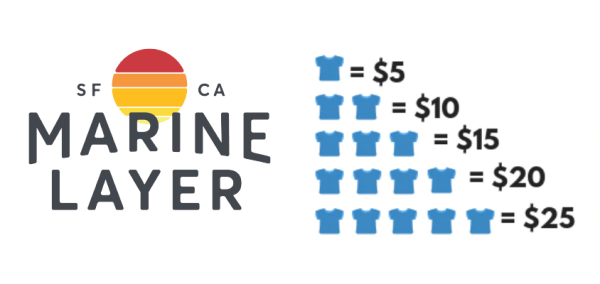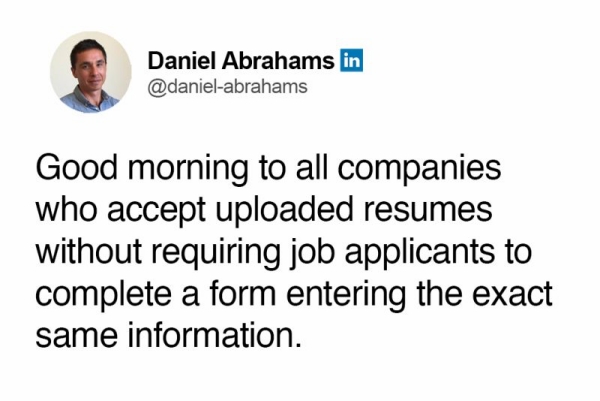Cybersecurity is expensive; underinvesting in it is more expensive. Just ask T-Mobile, which has agreed to a $350 million settlement over last year’s data breach that exposed the personal info of 76 million current and former customers (and even potential customers). The deal includes an additional $150 million in security upgrades.
A major telecom company is an obvious target for hackers, but small businesses aren’t safe either; a majority now get hit yearly at an average cost of $200,000. That’s pocket change for a publicly-traded corporation but could wipe you out. So, always follow cybersecurity best practices, consider buying cyber insurance, and if you need to save money, cut it from some other department.
|
|
|
Minor influence: See why micro-influencers can provide big savings.
Podcast: Farnoosh Torabi’s So Money is so worth the listen.
Marine Layer: This fashion company pays you for recycling.
|
|
|
Micro-Influencers Provide a Big Bang for Your Marketing Buck
|
Finding the perfect influencer for your brand can be a hassle. If you go with the biggest Instagram follower count, that could mean paying Kylie Jenner, Selena Gomez, Cristiano Ronaldo, or Dwayne Johnson anywhere from $400,000 to $1 million for a single post.
While this is the most expensive form of influencer marketing, it’s not the most efficient. In reality, micro-influencers with fewer than 10,000 followers are generating the best value for brands.
Under the Micro-Influence
A big follower count doesn’t mean high engagement … and a small follower count doesn’t mean low engagement. Micro-influencers can receive quadruple the average likes per follower of macro-influencers, according to HubSpot.
That’s why investing in a bunch of micro-influencers is potentially far more cost-effective than handing over a fortune to one big influencer. The micro-influencer’s niche audience tends to be more active — like a small community — and deeply trusts the micro-influencer’s judgment. This means more eyeballs for your brand and better value for your business.
Micro-Influencer or Complete Rando?
So, we’ve convinced you to not make The Rock or a Kardashian any richer. Now you’re asking, “What’s the difference between a micro-influencer and someone who just has a few thousand online friends?”
The key is an active audience. Usually, an engagement rate of 6% to 12% is the sweet spot and industry standard.
To determine if someone would be a good influencer for your brand, look at their content. Does it seem professional? Is it appealing to the eye? Does it fit with your voice and brand? (Beware of accounts that have fake engagement, meaning they paid for their likes, comments, and shares.)
You can find micro-influencers on platforms like Klear, Octoly, and Upfluence, which allow you to search by different parameters for a price. To find them for free, well, just ask the most influential person you know.
|
|
|
$1.7 to $15 billion
Growth of the influencer market from 2016 to 2022
(Source: Collabstr)
|
|
|
So Money With Farnoosh Torabi: So Worth the Listen
|
So Money is so acclaimed — with publications from The New York Times to Inc. and Entrepreneur calling it one of the best financial podcasts around — it might already be on your playlist. So, why all the hype?
For starters, host Farnoosh Torabi’s other job as money editor at CNET makes her more than qualified to tackle wide-ranging topics like payroll issues, communication coaching, and how to use social capital to make a difference in your community. Plus, her guest lineup reads like a fantasy draft pick for entrepreneurs: Seth Godin, Gretchen Rubin, Jim Cramer, Arianna Huffington, and Tim Ferriss are just the tip of the iceberg.
Even better, for 20-plus minutes per week, she answers audience questions via the #AskFarnoosh hashtag. Give it a chance — maybe she’ll even be your personal consultant for a spell.
|
|
|
Do you have a few T-shirts that have seen better days? Most of us do. In the U.S., 21 billion pounds of textile waste go into landfills annually.
Casual apparel manufacturer Marine Layer is making a dent in that number with its one-of-a-kind Re-Spun recycling program. Request a recycling kit and send in your old tees (or drop them off at any Marine Layer store) and you’ll receive an instant $5 store credit for each shirt donated, up to $25.
The company breaks your old tees down into recycled yarn, and they go on to a second life. While cotton is preferred, even spandex items are recyclable for housing insulation and other uses. To date, Marine Layer says its program has diverted 400,000 shirts from landfills — and it’s earned a whole bunch of repeat customers too.
|
|
|
“I hold that a strongly marked personality can influence descendants for generations.”
― Beatrix Potter
|
|
|
Written by Carlos Rosario Gonzalez, Jane Meggitt, and Dan Ketchum.
|
|
|
|






